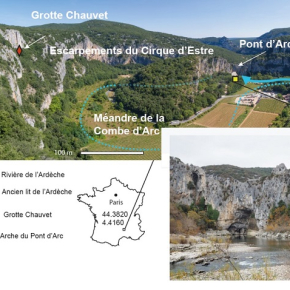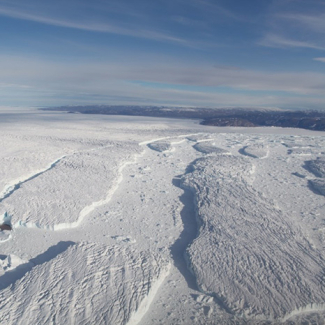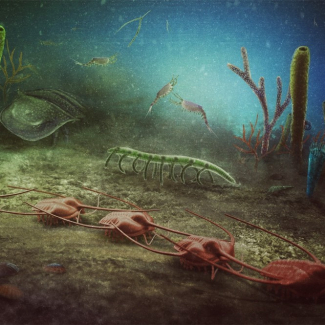
When Chauvet Cave artists created its artwork, the Pont d’Arc was already there
The Chauvet Cave, which lies by the entrance to the Gorges of the Ardèche, is home to the world’s oldest cave paintings, dating back 36,000 years. Their state of preservation and aesthetic qualities earned them a spot on the World Heritage List in 2014, 20 years after their discovery. The location of the cavern—surrounded by a remarkable landscape, next to the Pont d’Arc natural archway—raises the question of whether the people who executed these artworks looked and walked out upon the same landscape as today. Did they see the same natural archway? Scientists from the CNRS, Université Savoie Mont Blanc, and the Muséum National d’Histoire Naturelle1 now know the answer. By studying the landform of the area and making novel use of applied mathematics to date sand transported by the Ardèche River, they determined that the Pont d’Arc was formed about 124,000 years ago. This study published on April 26 in Scientific reports these past communities were therefore familiar with the same landmarks we know today: the gorge entrance, a natural archway, and a ledge leading directly to the cave entrance, which was then wide open.
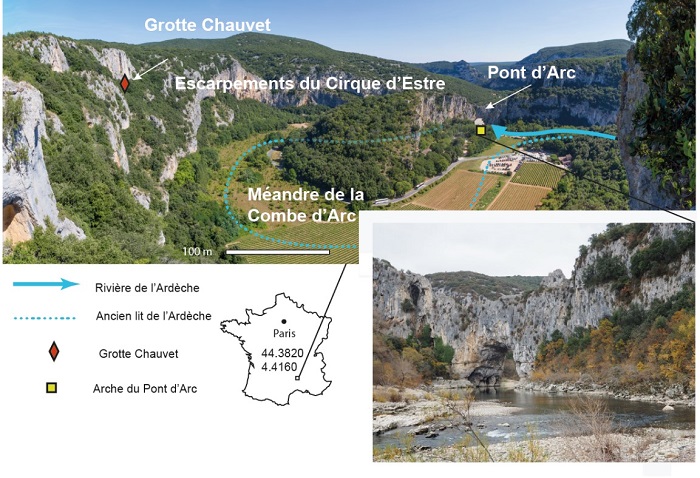
© Jean-Jacques Delannoy and Stéphane Jaillet
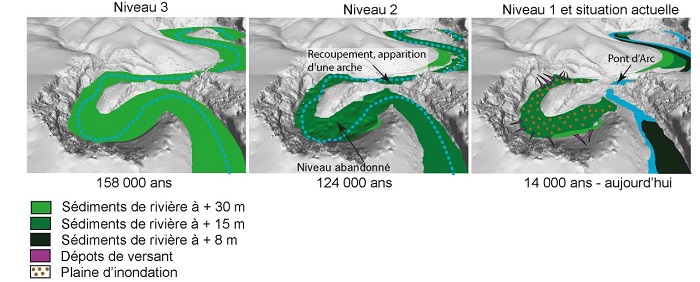
© Kim Génuite
- 1They are respectively members of the Environnements, Dynamiques et Territoires de Montagne (CNRS / Université Savoie Mont Blanc) and Histoire Naturelle de l’Homme Préhistorique (CNRS / Muséum National d’Histoire Naturelle / Université de Perpignan – Via Domitia) research units, the Laboratoire des Sciences du Climat et de l’Environnement (CNRS / Université de Versailles Saint-Quentin-en-Yvelines / CEA), and the Laboratoire de Mathématiques Jean Leray (CNRS / Université de Nantes). The University of Tokyo was also involved in this work.
Dating the landscape evolution around the Chauvet-Pont d’Arc cave. Kim Genuite, Jean-Jacques Delannoy, Jean-Jacques Bahain, Marceau Gresse, Stéphane Jaillet, Anne Phillippe, Edwige Pons-Branchu, André Revil and Pierre Voinchet. Scientific reports, April 26 2021. DOI : 10.1038/s41598-021-88240-5
